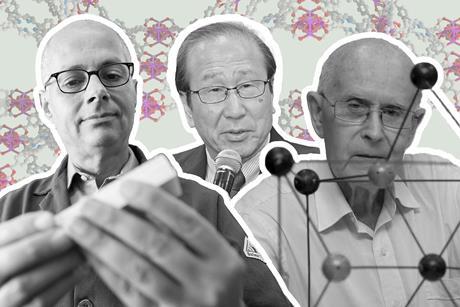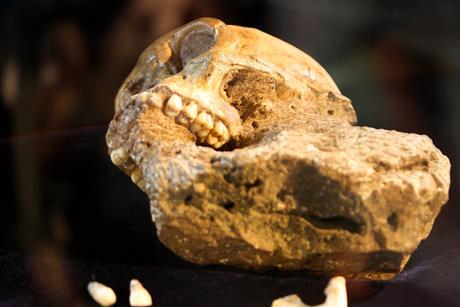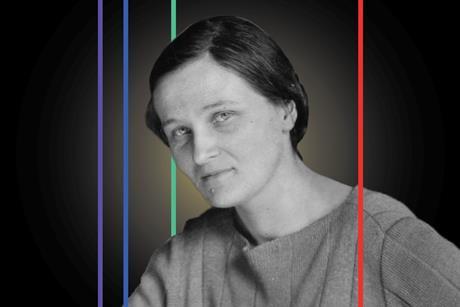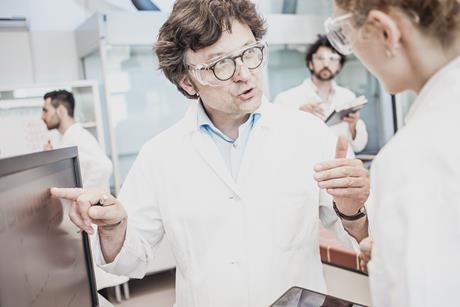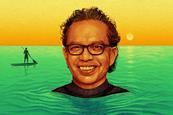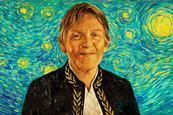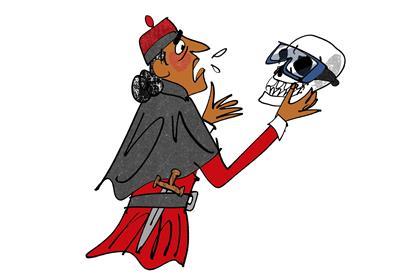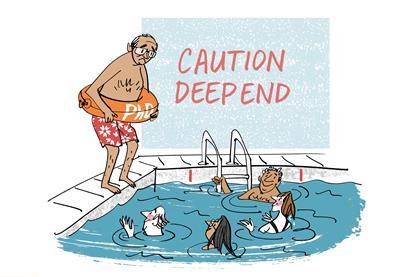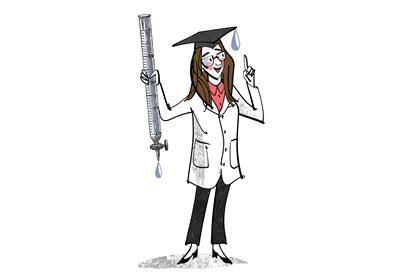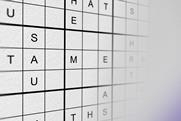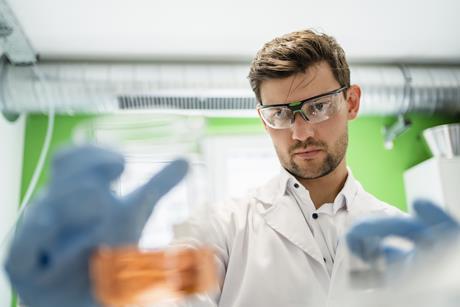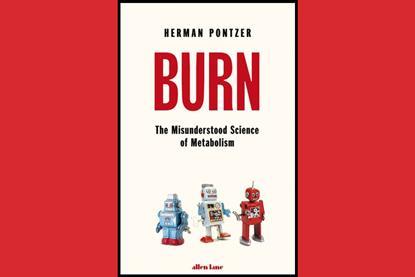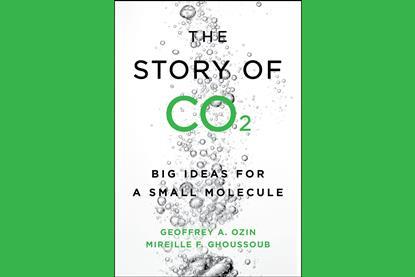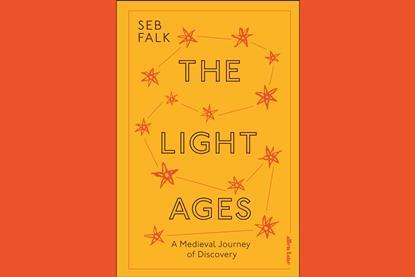Romans’ hot recipe for self-healing concrete unravelled in Pompeii
Discovery of building materials abandoned at construction site reveals secrets of ancient concrete that can set underwater
In times of strife, should you hold a work Christmas party?
Celebrations are important, even when redundancies and funding cuts mean many chemists aren’t in the festive mood
Learning computational chemistry in a new role
A change of team brings new opportunities to build knowledge
Photo of coiling net-caster spider silk wins Royal Society competition
Stunning electron micrograph of silk structure among 10 scientific photos to win prizes
Raj Shah: ‘A good laugh in the lab is often as important as a good reagent’
The award-winning chartered chemical engineer celebrates mentoring, curiosity and lubrication
Statements alone don’t make labs inclusive for disabled chemists
Leaders need to provide proactive support to disabled employees making adjustment requests
A love story: a polymer chemist accidentally falls for rubber
Born in 1950s Moscow, Irene Yurovska faced major hurdles as a Jewish woman but rubber bounced into her life and changed its trajectory forever
Royal Society of Chemistry calls for labs to become more inclusive for disabled chemists
Innovative thinking could address many of the problems that makes labs inaccessible
Highlights
How the pioneers of metal-organic frameworks won the Nobel prize
From wooden models to thousands and thousands of structures, Julia Robinson tells the story of how Richard Robson, Susumu Kitagawa and Omar Yaghi won the 2025 Nobel prize in chemistry
Rethinking workplaces for neurodivergent staff
Neurodivergent people often excel in skills highly valued in chemistry. Nina Notman investigates how employers are breaking down barriers and harnessing these talents through workplace adjustments and recruitment reforms
From flying ointments to healing herbs: the forgotten chemistry behind historical witchcraft practices
The unusual concoctions of village witches have historically been dismissed as nonsense hocus pocus – but is this the whole story? Victoria Atkinson investigates the chemistry behind the myth and whether there was more to witchcraft than ritual and superstition
How stable isotope analysis reveals what ancient humans and Neanderthals ate
Analytical chemistry can tell us what our ancestors ate thousands – or even millions – of years ago. Rachel Brazil gets her teeth into the evidence
The young female astronomer who worked out what the sun is made of
100 years ago, Cecilia Payne deduced that the sun is mainly made of hydrogen – but was encouraged to downplay her findings by her PhD supervisor. Mike Sutton takes up the story
Statements alone don’t make labs inclusive for disabled chemists
Leaders need to provide proactive support to disabled employees making adjustment requests
Royal Society of Chemistry calls for labs to become more inclusive for disabled chemists
Innovative thinking could address many of the problems that makes labs inaccessible
How the Royal Society of Chemistry is reshaping recognition in the chemical sciences
Changes over the past five years have enabled a wider variety of team and individual excellence to be celebrated
Why an inclusive culture is the best way to unlock chemistry’s potential
Reasonable adjustments enable diverse teams that can grow, innovate and tackle global problems
Rethinking workplaces for neurodivergent staff
Neurodivergent people often excel in skills highly valued in chemistry. Nina Notman investigates how employers are breaking down barriers and harnessing these talents through workplace adjustments and recruitment reforms
Chemistry for the visually impaired that can be felt, heard and smelt
The Indian Institute of Technology, Bombay, recently brought chemistry alive for students with sight loss
Mary Sherman Morgan: The best kept secret in the space race
Anna Demming reveals the scientist who invented the fuel that powered the first US satellite into orbit, yet died with barely a trace on record of her achievements
Martin Gouterman: the gay man behind the four-orbital model
Abhik Ghosh tells the story of a porphyrin chemist who was a leading figure in Seattle’s gay rights movement of the 1960s
William Knox, the only Black supervisor in the Manhattan Project
The story of the Knox family is one of education overcoming adversity, finds Kit Chapman
Raj Shah: ‘A good laugh in the lab is often as important as a good reagent’
The award-winning chartered chemical engineer celebrates mentoring, curiosity and lubrication
Odile Eisenstein: ‘Some of the most important advice is to be persistent’
The pioneering theoretical chemist on teaching herself programming and the importance of freedom
Robert Huber: ‘I call the last century the century of vision’
The Nobel laureate on the joys of entering a developing field, and the century of vision
What can biochemists learn from drama?
How my acting background helps me build my scientific skills
A prize better than the Nobel
How a reality check, a little patience and a lot of polysaccharides shaped my scientific journey
How a mistake in the lab taught me new things about myself
One extra drop of titrant was all it took…
Chemistry wordoku #124
You may need to go out of your depth to find the seawater-studying geochemist hidden in this sudoku-inspired puzzle
Cryptic chemistry crossword #116
We hope that doing our cryptic chemistry crosswords isn’t ’Pure torture now and again (4)’
Quick chemistry crossword #100 - Shimadzu special
Search for solutions in this special Shimadzu-themed quick chemistry crossword
Cryptic chemistry crossword #115
Can you find the ’Odd extra letter (3)’ in this cryptic chemistry crossword?
What makes a scientific breakthrough truly chemical?
Why MOFs are a great choice for the Nobel prize in chemistry
The conceptual challenge of consumer safety
Understanding causation can motivate product improvements
What the smell of benzene tells us about the world
A philosophical discussion about how much we can trust our senses
How feminist bioethics can improve women’s health
From correcting research imbalances to placing value on lived experiences
In search of truth and rules
To codify and predict ever more complex phenomena is one of science’s great drivers
Classifications, racial discrimination and Covid-19
Lessons with philosophical significance for how we group people and objects
The moral theories behind climate deadlock
Why is it so controversial to do the right thing for the environment?
’Chemistry is incredibly complicated’: The interface between chemistry and art
Liverpool PhD student Emma Brass talks to Chemistry World about her AI-powered art installation
Odile Eisenstein: ‘Some of the most important advice is to be persistent’
The pioneering theoretical chemist on teaching herself programming and the importance of freedom
Nature’s amazing chemistry: reflections on its complexity and diversity
Take a walk on the wild side to discover the wacky and wonderful chemical mysteries of the natural world
Romans’ hot recipe for self-healing concrete unravelled in Pompeii
Discovery of building materials abandoned at construction site reveals secrets of ancient concrete that can set underwater
Letraset’s transfers and placing precision back on the drawing board
Professional lettering with a few rubs of a ballpoint pen
Roman-era ink reveals surprising chemical complexity
2000-year-old residue indicates the Romans wrote with iron-gall inks hundreds of years earlier than expected
Why an inclusive culture is the best way to unlock chemistry’s potential
Reasonable adjustments enable diverse teams that can grow, innovate and tackle global problems
Rethinking workplaces for neurodivergent staff
Neurodivergent people often excel in skills highly valued in chemistry. Nina Notman investigates how employers are breaking down barriers and harnessing these talents through workplace adjustments and recruitment reforms
In times of strife, should you hold a work Christmas party?
Celebrations are important, even when redundancies and funding cuts mean many chemists aren’t in the festive mood
Learning computational chemistry in a new role
A change of team brings new opportunities to build knowledge
Photo of coiling net-caster spider silk wins Royal Society competition
Stunning electron micrograph of silk structure among 10 scientific photos to win prizes
Raj Shah: ‘A good laugh in the lab is often as important as a good reagent’
The award-winning chartered chemical engineer celebrates mentoring, curiosity and lubrication
Statements alone don’t make labs inclusive for disabled chemists
Leaders need to provide proactive support to disabled employees making adjustment requests
Royal Society of Chemistry calls for labs to become more inclusive for disabled chemists
Innovative thinking could address many of the problems that makes labs inaccessible
Photo of coiling net-caster spider silk wins Royal Society competition
Stunning electron micrograph of silk structure among 10 scientific photos to win prizes
Letraset’s transfers and placing precision back on the drawing board
Professional lettering with a few rubs of a ballpoint pen
What can biochemists learn from drama?
How my acting background helps me build my scientific skills
Just 29% of the UK public have a personal interest in R&D
Survey results suggest ‘broad but shallow’ public support for research sector
The chemist who commemorates lab discoveries on his body
University of Nebraska’s drug design centre director is communicating his team’s scientific breakthroughs with tattoos and now has 29 on his arm
The lost treasure of electron microscopy
Unpublished images should be brought to light to aid science communication and speed up discovery
Comic book chemistry
The scientists using visual storytelling to communicate their work – and how you can do it too





